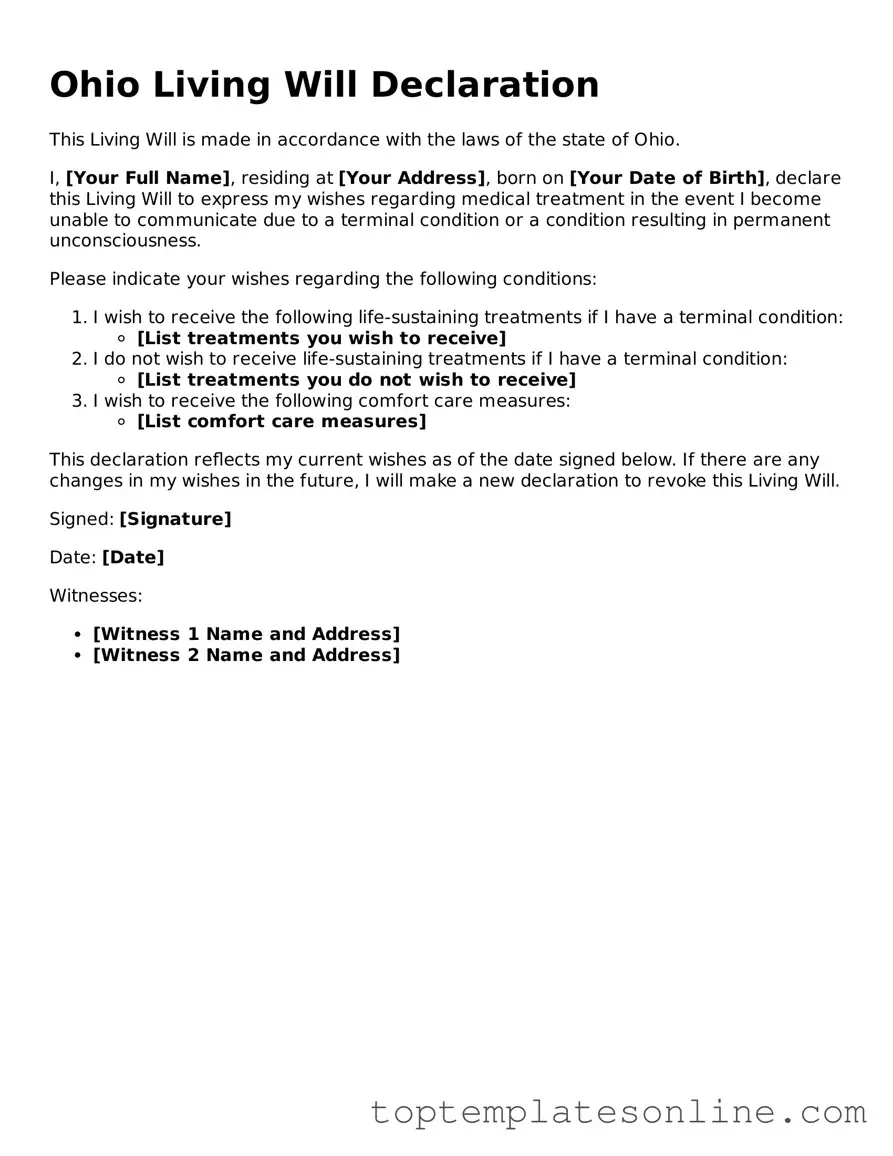In the state of Ohio, a Living Will serves as a vital document that allows individuals to express their wishes regarding medical treatment in situations where they may be unable to communicate their preferences. This form is particularly important for those facing serious health conditions or end-of-life scenarios. By completing a Living Will, you can specify the types of medical interventions you do or do not want, such as resuscitation efforts, mechanical ventilation, or feeding tubes. This document not only provides clarity for healthcare providers but also alleviates the emotional burden on family members who might otherwise have to make difficult decisions on your behalf. It's essential to understand that a Living Will is different from a durable power of attorney for healthcare, which designates someone to make decisions for you. Instead, the Living Will focuses solely on your treatment preferences. In Ohio, the process of creating a Living Will is straightforward, and it can be tailored to reflect your values and beliefs about medical care, ensuring that your voice is heard even when you cannot speak for yourself.
